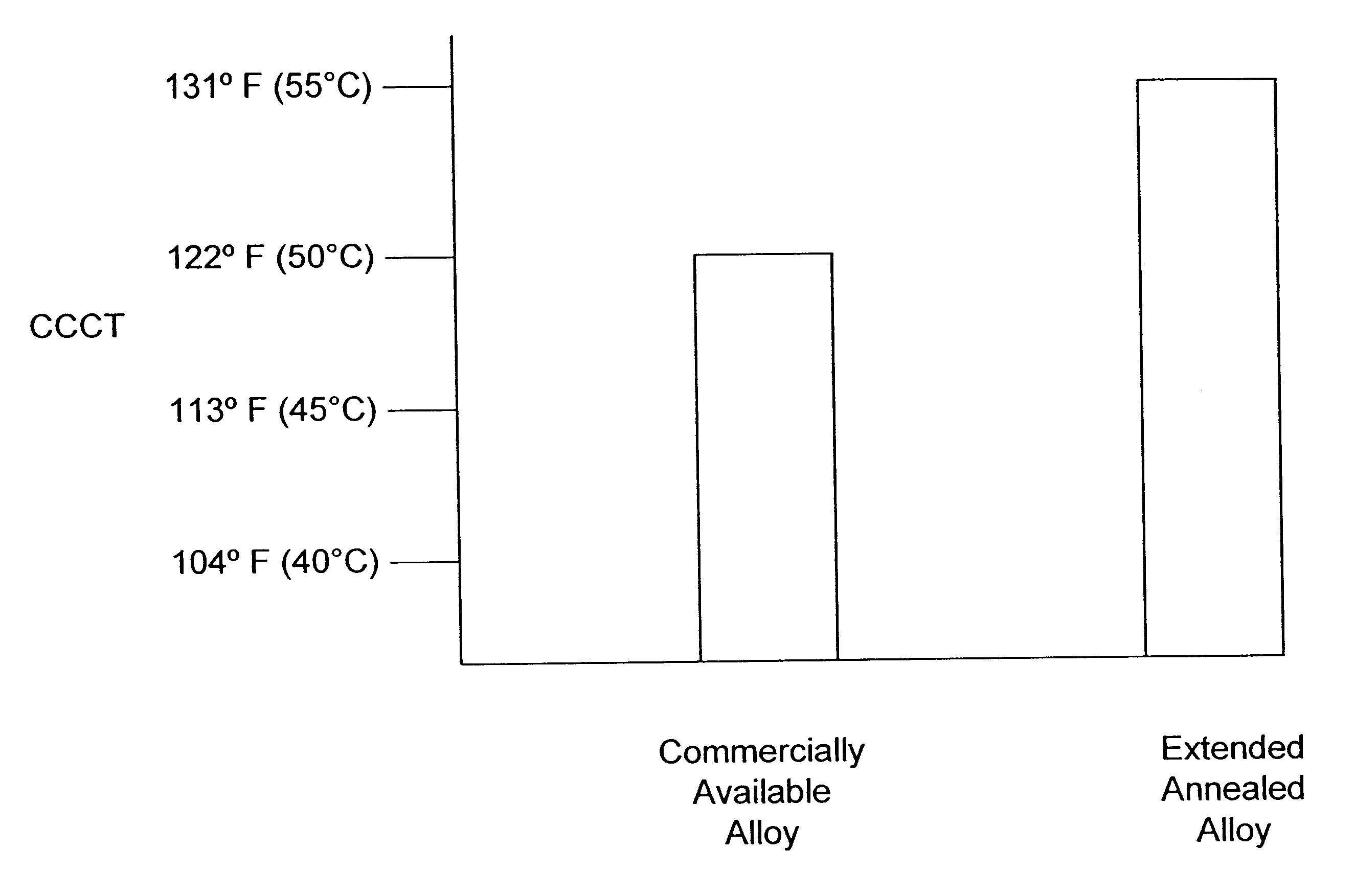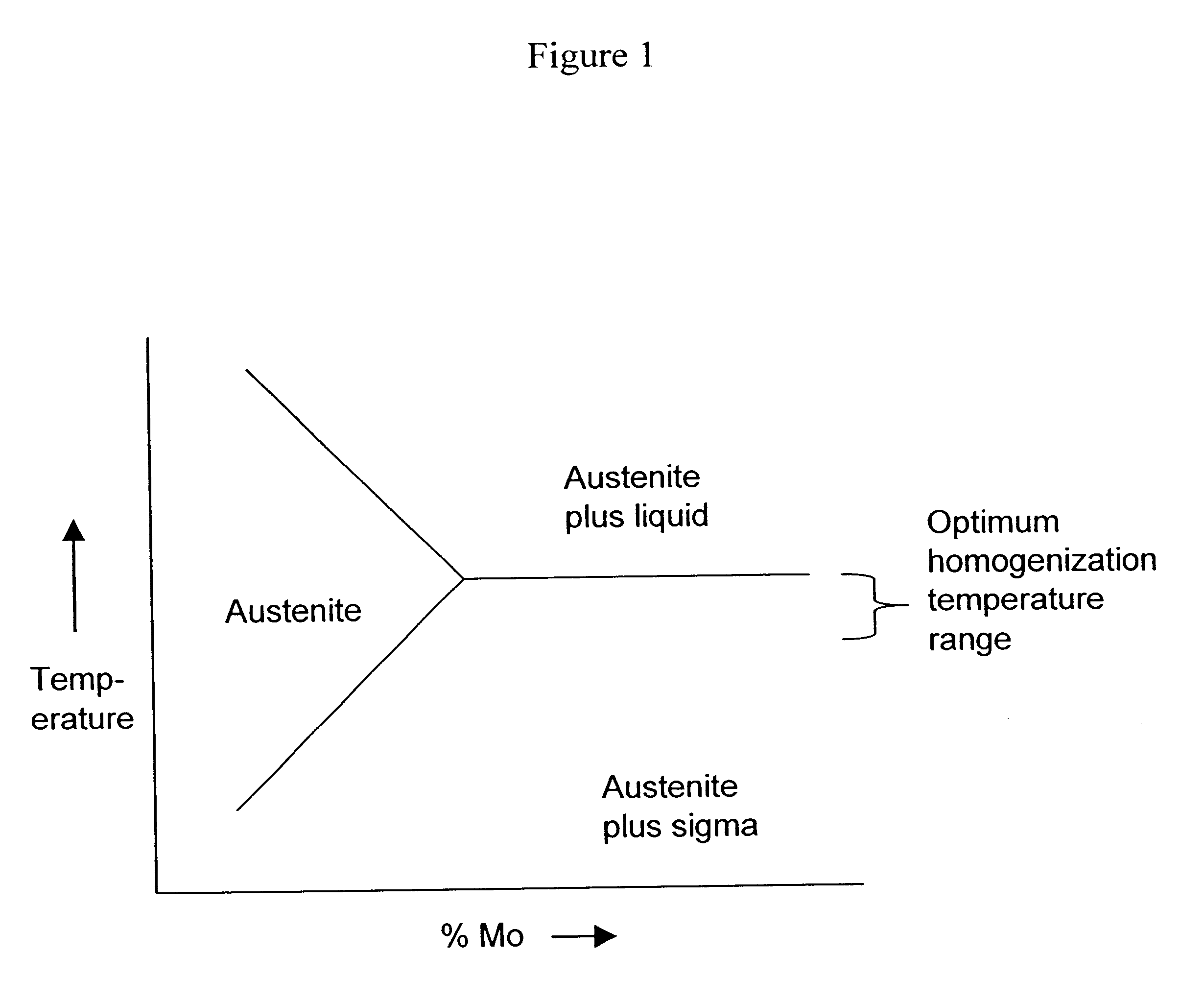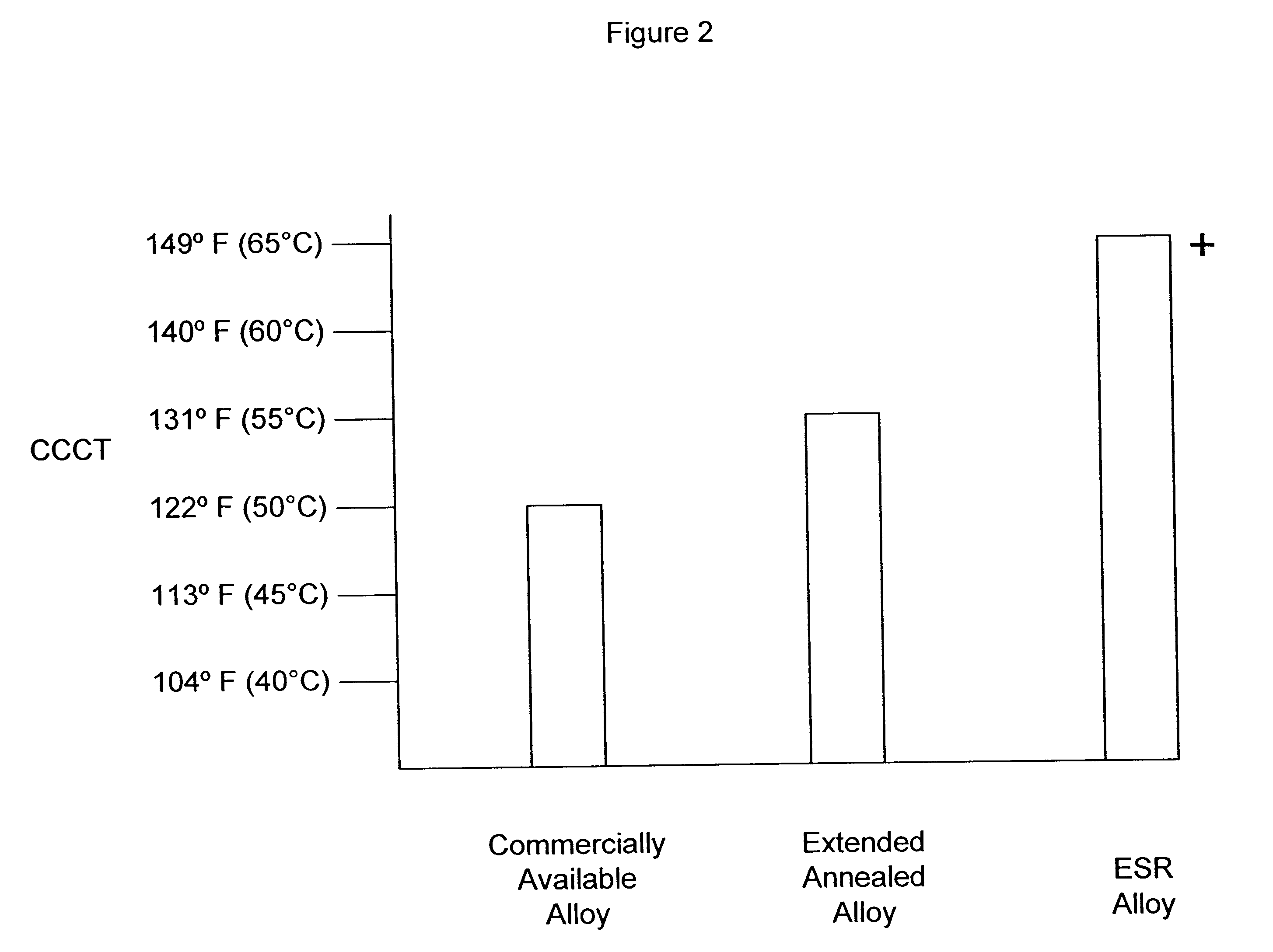Method of producing stainless steels having improved corrosion resistance
a technology of stainless steel and corrosion resistance, which is applied in the direction of metal-working equipment, welding/cutting media/materials, lighting and heating equipment, etc., can solve the problems of severe forms of corrosion, extreme aggressive corroding of these alloys, and insufficient molybdenum-containing alloys
- Summary
- Abstract
- Description
- Claims
- Application Information
AI Technical Summary
Benefits of technology
Problems solved by technology
Method used
Image
Examples
example 1
Table 3 shows the results of a modified ASTM G-48 Practice B crevice corrosion test performed on AL-6XN PLUS alloy that has been prepared by the prior art method as described above, and with the additional step of ESR after casting. No measurable crevice attack or weight loss occurred for any sample at temperatures ranging from 113-149.degree. F. (45-65.degree. C.). Sample 120B 651 showed evidence of a slight attack on one edge, but had no measurable crevice depth or weight loss. The CCCT of an alloy produced by the present invention is greater than 149.degree. F. (65.degree. C.). As Table 3 indicates, the corrosion results obtained with the ESR-processed alloy are superior to those of the alloy in Table 1, which was prepared by the same method, but without the additional ESR step. Without wishing to be limited by the following mechanism, it is believed that the higher CCCT is due to the fact that ESR processing provides greater homogenization of the major alloying elements in the s...
example 2
Table 4 shows the results of a modified ASTM G-48 Practice B crevice corrosion test performed on AL-6XNPLUS.TM. alloy prepared by the prior art method described above, and with an additional two-hour extended annealing homogenization treatment at 2150.degree. F. (1177.degree. C.). At 131.degree. F. (55.degree. C.), both samples experienced a very shallow attack on the edges, but the crevice depth was not measurable. In addition, each sample experienced a weight loss of 0.0001 gm / cm.sup.2. The data of Table 4 demonstrates that the homogenization performed by extended annealing produced an alloy having a CCCT greater than 131.degree. F. (55.degree. C.). These properties are substantially superior to those seen with the same alloy produced by conventional methods in Table 1, which produced a CCCT of 122.degree. F. (50.degree. C.). Table 4 again confirms the importance of homogenizing an alloy having a PRE.sub.N equal to or greater than 50 in order to obtain more desirable corrosion res...
PUM
| Property | Measurement | Unit |
|---|---|---|
| temperature | aaaaa | aaaaa |
| temperature | aaaaa | aaaaa |
| temperature | aaaaa | aaaaa |
Abstract
Description
Claims
Application Information
 Login to View More
Login to View More - R&D
- Intellectual Property
- Life Sciences
- Materials
- Tech Scout
- Unparalleled Data Quality
- Higher Quality Content
- 60% Fewer Hallucinations
Browse by: Latest US Patents, China's latest patents, Technical Efficacy Thesaurus, Application Domain, Technology Topic, Popular Technical Reports.
© 2025 PatSnap. All rights reserved.Legal|Privacy policy|Modern Slavery Act Transparency Statement|Sitemap|About US| Contact US: help@patsnap.com



